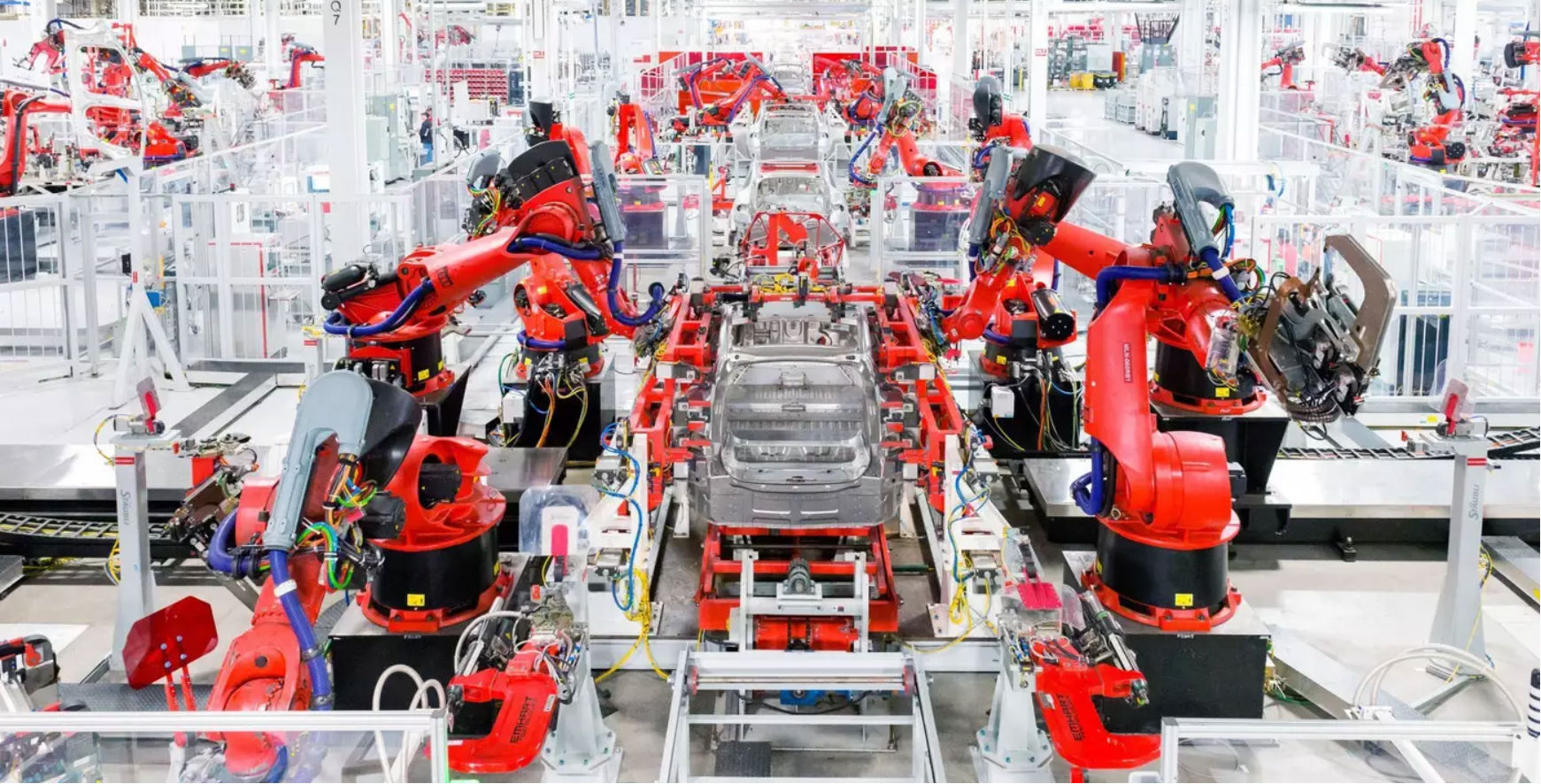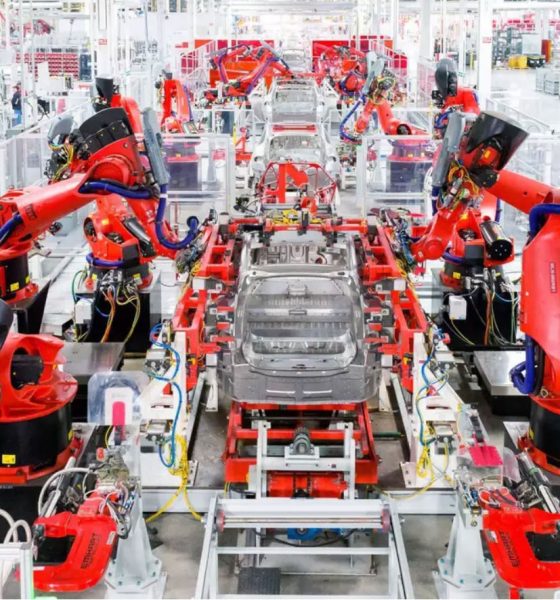

Investor's Corner
Tesla Model 3 mass production in Giga 3 to benefit from China’s policy update for foreign carmakers
A recent policy update from the Chinese government could open the doors for Tesla to begin the mass production of the Model 3 in Gigafactory 3 sooner than expected.
Recent reports from local news agencies have revealed that on July 9, the China Quality Certification Center, together with the Shanghai Market Inspection Bureau and the Shanghai Pilot Free Trade Zone Management Committee, jointly signed a memorandum that would allow automakers operating in the Shanghai Free Trade Zone to start the mass production of vehicles while the compulsory product certification (3C certification) process is ongoing.
The 3C certification process is one of the Chinese government’s product conformity assessment systems. Regulations established in May 2003 demanded that all automotive products produced in China must meet 3C certification requirements before being mass-produced. Products that fail the 3C certification would be prohibited from being produced or sold, according to Caijing News.
Under the terms of the newly signed memorandum, automakers, provided that they are operating from the Shanghai Free Trade Zone, could start vehicle production even as the cars undergo the 3C certification process. What is quite interesting is that there is only one automaker that is currently at the Shanghai Free Trade Zone operating a solely-owned facility — the Silicon Valley electric car maker, Tesla.
While the updated policy from the Chinese government could benefit any automaker that chooses to operate from the Shanghai Free Trade Zone, the fact that Tesla is the only company today that can take advantage of the recently-signed joint memorandum further emphasizes the support that the electric car maker is receiving from the Chinese government.
Tesla has already received what appears to be favors from the local government in China, as shown in the company curiously becoming the sole bidder for the Gigafactory 3 site, as well as the rather painless way the electric car maker was able to secure loans for the construction of the massive facility. In this sense, the updated policy that would allow Tesla to start Model 3 production despite the electric sedan undergoing 3C certification could be considered as China’s latest act of support for the electric car maker.
It should be noted that this is the first time that the Chinese government is showing this level of support for a foreign automaker operating in the country. Prior to Tesla, China has been incredibly strict with the 3C certification process, requiring carmakers to produce sample vehicles that would usually end up undergoing a lengthy certification process. Tesla will not be meeting any of these delays.
Tesla CEO Elon Musk has noted that Gigafactory 3 could start producing the Model 3 in Gigafactory 3 by the end of this year. Local reports from China itself have suggested that Musk’s target could actually be conservative, as initial Model 3 production could begin as early as September, barring any unexpected delays.
Just recently, Ma Chunlei, director of the Shanghai Municipal Development and Reform Commission, expressed his optimism for the start of Gigafactory 3’s operations. “I believe that at the end of this year and early next year, you may see or buy the Tesla Model 3 produced in Shanghai, China,” he said. Once Gigafactory 3 hits its stride in producing the electric sedan, the facility is expected to ramp its production to around 3,000 vehicles per week.

Investor's Corner
Tesla stock closes at all-time high on heels of Robotaxi progress

Tesla stock (NASDAQ: TSLA) closed at an all-time high on Tuesday, jumping over 3 percent during the day and finishing at $489.88.
The price beats the previous record close, which was $479.86.
Shares have had a crazy year, dipping more than 40 percent from the start of the year. The stock then started to recover once again around late April, when its price started to climb back up from the low $200 level.
This week, Tesla started to climb toward its highest levels ever, as it was revealed on Sunday that the company was testing driverless Robotaxis in Austin. The spike in value pushed the company’s valuation to $1.63 trillion.
Tesla Robotaxi goes driverless as Musk confirms Safety Monitor removal testing
It is the seventh-most valuable company on the market currently, trailing Nvidia, Apple, Alphabet (Google), Microsoft, Amazon, and Meta.
Shares closed up $14.57 today, up over 3 percent.
The stock has gone through a lot this year, as previously mentioned. Shares tumbled in Q1 due to CEO Elon Musk’s involvement with the Department of Government Efficiency (DOGE), which pulled his attention away from his companies and left a major overhang on their valuations.
However, things started to rebound halfway through the year, and as the government started to phase out the $7,500 tax credit, demand spiked as consumers tried to take advantage of it.
Q3 deliveries were the highest in company history, and Tesla responded to the loss of the tax credit with the launch of the Model 3 and Model Y Standard.
Additionally, analysts have announced high expectations this week for the company on Wall Street as Robotaxi continues to be the focus. With autonomy within Tesla’s sights, things are moving in the direction of Robotaxi being a major catalyst for growth on the Street in the coming year.
Elon Musk
Tesla needs to come through on this one Robotaxi metric, analyst says
“We think the key focus from here will be how fast Tesla can scale driverless operations (including if Tesla’s approach to software/hardware allows it to scale significantly faster than competitors, as the company has argued), and on profitability.”

Tesla needs to come through on this one Robotaxi metric, Mark Delaney of Goldman Sachs says.
Tesla is in the process of rolling out its Robotaxi platform to areas outside of Austin and the California Bay Area. It has plans to launch in five additional cities, including Houston, Dallas, Miami, Las Vegas, and Phoenix.
However, the company’s expansion is not what the focus needs to be, according to Delaney. It’s the speed of deployment.
The analyst said:
“We think the key focus from here will be how fast Tesla can scale driverless operations (including if Tesla’s approach to software/hardware allows it to scale significantly faster than competitors, as the company has argued), and on profitability.”
Profitability will come as the Robotaxi fleet expands. Making that money will be dependent on when Tesla can initiate rides in more areas, giving more customers access to the program.
There are some additional things that the company needs to make happen ahead of the major Robotaxi expansion, one of those things is launching driverless rides in Austin, the first city in which it launched the program.
This week, Tesla started testing driverless Robotaxi rides in Austin, as two different Model Y units were spotted with no occupants, a huge step in the company’s plans for the ride-sharing platform.
Tesla Robotaxi goes driverless as Musk confirms Safety Monitor removal testing
CEO Elon Musk has been hoping to remove Safety Monitors from Robotaxis in Austin for several months, first mentioning the plan to have them out by the end of 2025 in September. He confirmed on Sunday that Tesla had officially removed vehicle occupants and started testing truly unsupervised rides.
Although Safety Monitors in Austin have been sitting in the passenger’s seat, they have still had the ability to override things in case of an emergency. After all, the ultimate goal was safety and avoiding any accidents or injuries.
Goldman Sachs reiterated its ‘Neutral’ rating and its $400 price target. Delaney said, “Tesla is making progress with its autonomous technology,” and recent developments make it evident that this is true.
Investor's Corner
Tesla gets bold Robotaxi prediction from Wall Street firm
Last week, Andrew Percoco took over Tesla analysis for Morgan Stanley from Adam Jonas, who covered the stock for years. Percoco seems to be less optimistic and bullish on Tesla shares, while still being fair and balanced in his analysis.

Tesla (NASDAQ: TSLA) received a bold Robotaxi prediction from Morgan Stanley, which anticipates a dramatic increase in the size of the company’s autonomous ride-hailing suite in the coming years.
Last week, Andrew Percoco took over Tesla analysis for Morgan Stanley from Adam Jonas, who covered the stock for years. Percoco seems to be less optimistic and bullish on Tesla shares, while still being fair and balanced in his analysis.
Percoco dug into the Robotaxi fleet and its expansion in the coming years in his latest note, released on Tuesday. The firm expects Tesla to increase the Robotaxi fleet size to 1,000 vehicles in 2026. However, that’s small-scale compared to what they expect from Tesla in a decade.
Tesla expands Robotaxi app access once again, this time on a global scale
By 2035, Morgan Stanley believes there will be one million Robotaxis on the road across multiple cities, a major jump and a considerable fleet size. We assume this means the fleet of vehicles Tesla will operate internally, and not including passenger-owned vehicles that could be added through software updates.
He also listed three specific catalysts that investors should pay attention to, as these will represent the company being on track to achieve its Robotaxi dreams:
- Opening Robotaxi to the public without a Safety Monitor. Timing is unclear, but it appears that Tesla is getting closer by the day.
- Improvement in safety metrics without the Safety Monitor. Tesla’s ability to improve its safety metrics as it scales miles driven without the Safety Monitor is imperative as it looks to scale in new states and cities in 2026.
- Cybercab start of production, targeted for April 2026. Tesla’s Cybercab is a purpose-built vehicle (no steering wheel or pedals, only two seats) that is expected to be produced through its state-of-the-art unboxed manufacturing process, offering further cost reductions and thus accelerating adoption over time.
Robotaxi stands to be one of Tesla’s most significant revenue contributors, especially as the company plans to continue expanding its ride-hailing service across the world in the coming years.
Its current deployment strategy is controlled and conservative to avoid any drastic and potentially program-ruining incidents.
So far, the program, which is active in Austin and the California Bay Area, has been widely successful.








